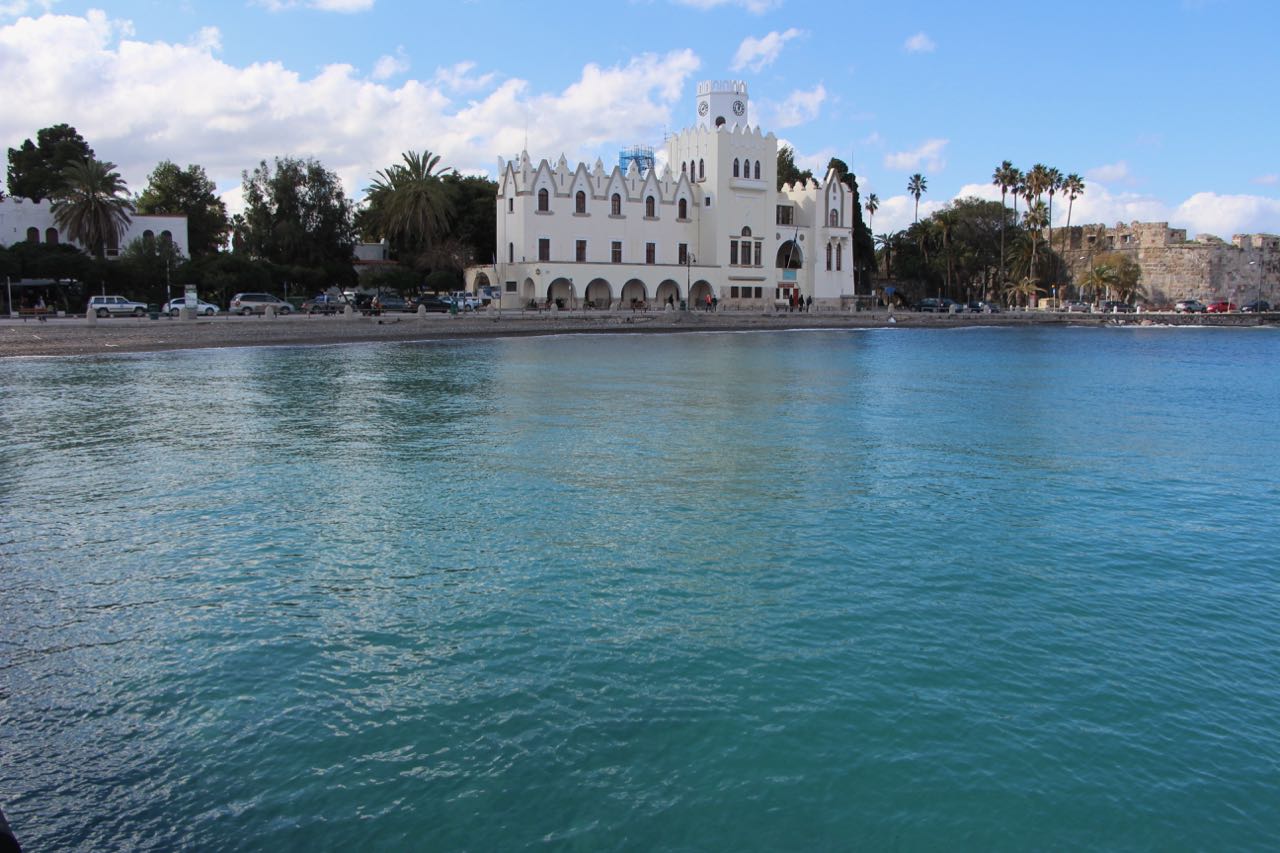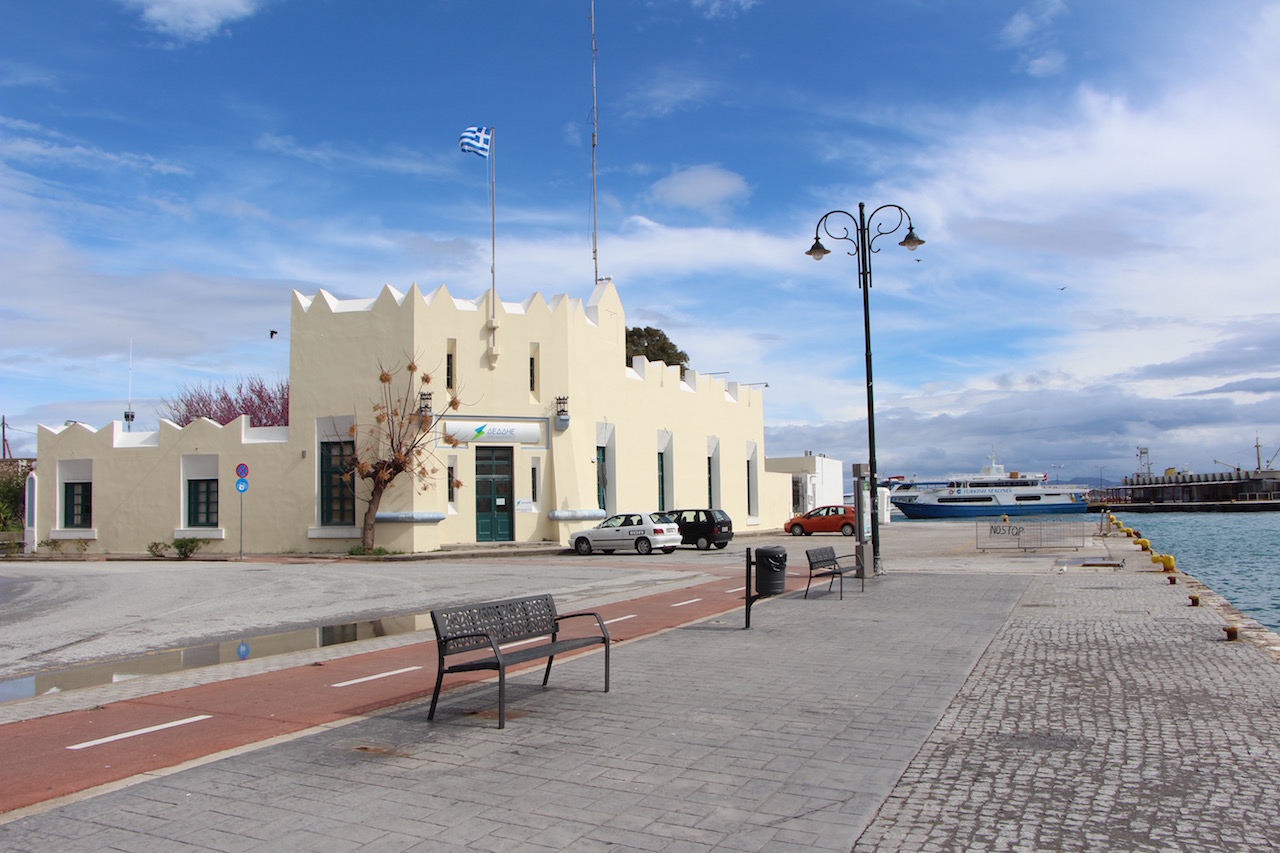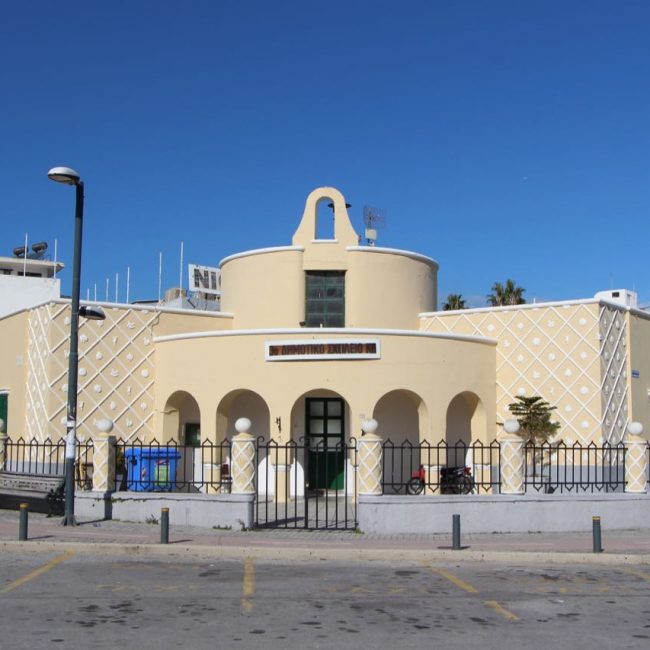The Government House, also known as the Administrative Building, is a significant historical landmark in Kos. Designed by the Italian architect Florestano Di Fausto in 1925, the building was constructed between 1927 and 1930 during the Italian Administration of the Dodecanese (1912-1943). This architectural gem was originally the official residence of the vice-governor of Kos and served various administrative functions throughout its history.
Historical Significance:
- Architectural Design: The building’s polygonal dynamic plan and central interior patio exemplify the eclectic architectural style favored by the Italians during their occupation. Its façades feature diverse morphological elements, showcasing the unique blend of neoclassical, Aegean, and Balkan influences that characterized Italian designs in the Dodecanese.
- Functions Over Time: During the Italian era, the basement of the Government House housed the fascist Blackshirts body (Camerate), reflecting its multifaceted role in the region’s administration. Over the years, the complex also served as the residence of the Governor of the Courts and continues to function as a police station to this day.
- Symbolic Location: Situated on the eastern coastal front of the city, at the northeastern end of the pre-seismic center near the Plane Tree of Hippocrates Square and the Knights’ Castle Neratzia, the Government House stands as a symbol of Kos’s rich historical and architectural heritage.
The Evolution of Yialos Square:
- Historical Context: Once known as Yialos Square, located on the East coast (currently Akti Miaouli), this area was an extension of the central Platanos Square and primarily served port-related functions. Before the major earthquake of 1933, it featured essential public buildings such as Customs, the Health Office, the Telegraph, the Post Office, the Port Authority, and various municipal offices and warehouses.
- Post-Earthquake Changes: Following the earthquake of 1933, which significantly impacted the area, the municipal edifices were remodeled, reflecting a blend of architectural influences. The former Casino recreation building was replaced with a small coastal park, transforming the landscape and contributing to the area’s aesthetic and functional evolution.
Conclusion:
The Government House and the surrounding area encapsulate a rich tapestry of historical events and architectural styles. As a key example of Italian eclecticism in the Dodecanese, this building not only serves as a functional administrative center but also stands as a testament to the island’s dynamic history and evolving urban landscape.
















